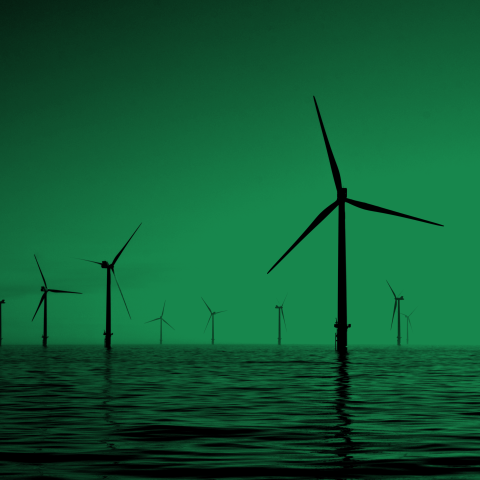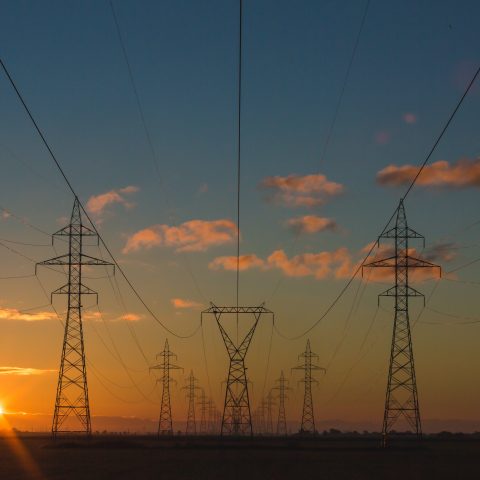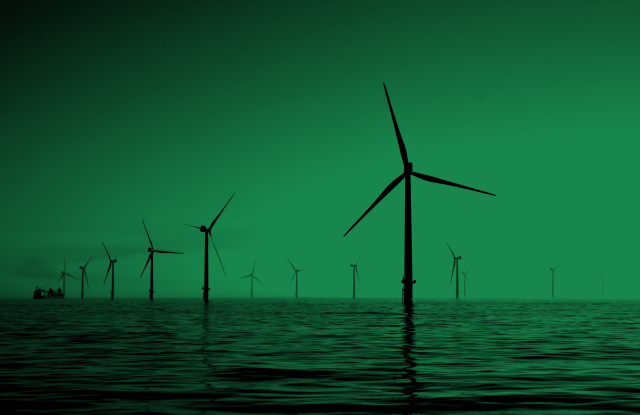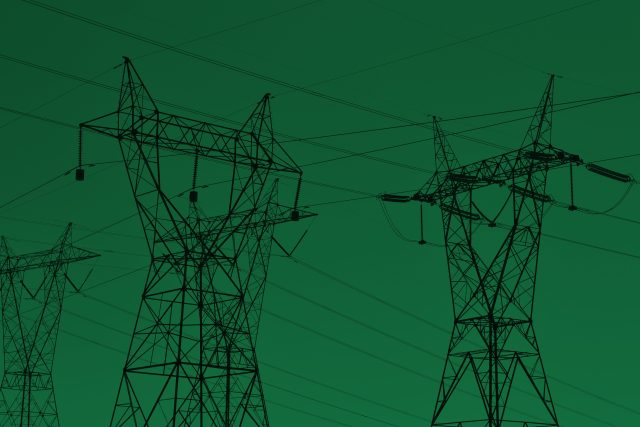

2023 Electric Utilities Benchmark
Measuring the 68 most influential electric utilities and 11 capital goods companies on their progress to 1.5°C

The World Benchmarking Alliance Climate and Energy Benchmark measured 68 of the world’s most influential electric utilities companies on their alignment to a low-carbon world.
The 2023 benchmark is the third iteration since its initial launch in 2020 and will assess how the sector has been performing over the last 3 years. This year the assessment will combine the ACT (Assessing low Carbon Transition) Electric Utilities methodology and WBA social and just transition indicators. This approach provides a holistic assessment of companies’ efforts to achieve a low-carbon transition that is just and equitable.
The success of decarbonisation in electric utilities and the entire sector is intricately linked to a comprehensive supply chain, encompassing the manufacturing of renewable generation technologies and power grid solutions. Consequently, to capture a first snapshot of the sectoral value chain, this year’s benchmark includes a limited selection of capital goods companies specialising in renewable manufacturing and integrated companies providing grid solutions.

Five key findings
The 2023 Electric Utilities Benchmark reveals valuable insights about the performance of 68 companies in the sector. Current trends in renewable generation from evaluated companies suggest that solar growth is on track to surpass Net Zero Emissions targets by 2030, though wind may fall slightly short. To sustain the momentum seen in renewable energy generation, it is crucial to accompany it with explicit planning commitments. This includes establishing dates for phasing out coal and gas, as well as divesting from fossil fuels given that the average proportion of low-carbon capital expenditure is currently only half of what is required for a thorough transition. Additionally, the lack of company focus on flexibility-enhancing actions of energy storage and promoting demand response, raises concerns about the energy sector’s overall preparedness for the 21st-century grid requirements.
To make the transition just is imperative for the low-carbon transition to be successful. This sector shows that all parts of a just transition are possible, with this being the only sector where good practice happens on every single indicator. However, companies still need to take further steps to ensure that the transition is truly just. In particular, companies should move beyond high level commitments to respecting workers and their jobs in the energy transition, to showing how they aim to do so, and that they understand what impact their low carbon transition will have on jobs and workers.

Wind and solar power advances signal the beginning of the transition from fossil fuel dominance
Between 2017 and 2022, wind and solar energy's combined share in the energy mix nearly doubled, reaching 7%. During the same period, coal and gas generation remained stable, with shares of 44% and 22% respectively. Projections indicate that solar generation is on track to grow sevenfold by 2030, surpassing the growth target outlined in the International Energy Agency's Net Zero Emissions (NZE). However, wind generation is expected to increase 2.4 times by 2030, falling slightly short of the 3.3-fold increase needed to meet the NZE goals. These trends highlight a positive shift towards renewable energy sources but also indicate the challenges in meeting ambitious targets for certain sectors within the renewable landscape.

Despite plans to transition, current commitments and investment are falling short of the ambition needed
The corporate landscape exhibits a stark deficit in ambitious climate commitments, with merely nine companies aligning their net-zero targets as per IEA requirements and only 10 setting short-term goals in line with the 1.5°C pathways. Troublingly, just 43% of companies relying on coal generation have committed to a definite phase-out date, and a mere 13% aim to achieve this critical transition before 2030. A broader concern arises from the average proportion of low-carbon capital expenditure – dedicated to solutions such as renewable electricity generation, battery storage, carbon capture and storage to decarbonise fossils-based electricity generation, which falls significantly below the necessary threshold, reaching only half of what is required to effectively fund a comprehensive low-carbon transition.

The rise of renewables may be hindered unless energy storage and demand response grows to match it
The evolution of business models to facilitate a seamless transition and boost grid flexibility is lagging behind the expected surge in clean energy production. A mere 31% of companies are actively constructing storage capacity and revealing plans for its expansion, a figure deemed inadequate to align battery storage capacity with the goals of the Net Zero Emissions (NZE) initiative. Additionally, there is a scarcity of companies proactively investing in initiatives focused on shaping demand patterns and fortifying the resilience of electricity supply. This deficiency in strategic efforts raises concerns about the overall preparedness of the energy sector in adapting to the requirements of 21st century grid.

The electric utilities sector shows that all fundamentals of a just transition are possible, yet companies still have more steps to take
The electric utilities sector shows that all parts of a just transition are possible, that each just transition sub-indicator can be met, with real world good practice happening across the whole industry. However, no individual company has brought all pieces of a just transition together, as the best performing company (SSE) only scores 12.5 points out of 20 available, and the average (mean) score is just 2.8 out of 20. Furthermore, the methodology only spells out the most fundamental parts of a just transition, and these parts should all be adapted and expanded upon to fit the context that companies operate in, to meet the needs of the stakeholders that are relevant there.

Companies need to bring their workers along to make it a just transition
Companies in the electric utilities sector show that they have high level commitments to jobs and workers as part of the low carbon transition. 33% are committed to create new green and decent jobs and 36% are committed to re-skill their existing workers to make sure they have the skills needed as business decarbonises. Commitments like these are important, but companies also need to show that they understand the path there and how it fits with their plans to decarbonise their business. Currently, only one company discloses its process for identifying the skills gaps that may emerge in the low carbon transition. Similarly, only one company assesses and discloses the risk of employment dislocation caused by the low carbon transition, which refers to the impact that their changing business may have on their current workers where they may become redundant as a result of the low carbon transition.

Find out the performance of the electric utilities companies
View rankingFurther reading
-
Insights report
This report builds on the above-mentioned key findings in detail and dives further into the module level summaries.
See insights report
-
Technical FAQs
These FAQs explain technical aspects of how the ACT methodologies are used to assess companies in high emitting sectors and create WBA’s Electric Utilities Benchmark.
See FAQs here
-
Benchmark data set
Our 2023 Electric Utilities Benchmark measures the world’s 68 most influential companies in the sector on their alignment with the Paris Agreement goal of limiting global warming to 1.5° Celsius and their contributions to a just transition. This data sheet compiles company-level information and module and indicator scoring.
See datasheet
-
Press release
Read or download the 2023 Electric Utilities Benchmark news announcement
See press release
The 68 keystone electric utilities companies
Locations
-
Title: Tohoku Electric Power
Place: Japan
Description: -
Title: Tokyo Electric Power Company
Place: Japan
Description: -
Title: Transcorp Power
Place: Nigeria
Description: -
Title: Uniper
Place: Germany
Description: -
Title: Vattenfall
Place: Sweden
Description: -
Title: Vietnam Electricity
Place: Vietnam
Description: -
Title: Vistra
Place: United States of America
Description: -
Title: WEC Energy Group
Place: United States of America
Description: -
Title: Xcel Energy
Place: United States of America
Description: -
Title: ABB
Place: Switzerland
Description: -
Title: Canadian Solar
Place: Canada
Description: -
Title: Eaton
Place: Ireland
Description: -
Title: First Solar
Place: United States of America
Description: -
Title: General Electric
Place: United States of America
Description: -
Title: Honeywell
Place: United States of America
Description: -
Title: Schneider Electric
Place: France
Description: -
Title: Siemens Gamesa
Place: Spain
Description: -
Title: Trina Solar
Place: China
Description: -
Title: Vestas
Place: Denmark
Description: -
Title: Goldwind
Place: China
Description: -
Title: AboitizPower
Place: Philippines
Description: -
Title: AES
Place: United States of America
Description: -
Title: AGL Energy
Place: Australia
Description: -
Title: American Eelectic Power
Place: United States of America
Description: -
Title: ČEZ Group
Place: Czech Republic
Description: -
Title: China Datang
Place: China
Description: -
Title: CHN Energy
Place: China
Description: -
Title: China Huadian
Place: China
Description: -
Title: China Huaneng
Place: China
Description: -
Title: China Three Gorges
Place: China
Description: -
Title: Chubu Electric Power
Place: Japan
Description: -
Title: Chugoku Electric Power
Place: Japan
Description: -
Title: CLP Group
Place: Hong Kong, China
Description: -
Title: CMS Energy
Place: United States of America
Description: -
Title: Comisión Federal de Electricidad
Place: Mexico
Description: -
Title: Constellation Energy
Place: United States of America
Description: -
Title: Dominion Energy
Place: United States of America
Description: -
Title: Duke Energy
Place: United States of America
Description: -
Title: E.ON
Place: Germany
Description: -
Title: Energias de Portugal
Place: Portugal
Description: -
Title: Egyptian Electricity Holding Company
Place: Egypt
Description: -
Title: Électricité de France
Place: France
Description: -
Title: Electricity Generating Authority of Thailand
Place: Thailand
Description: -
Title: Eletrobras
Place: Brazil
Description: -
Title: EnBW Company
Place: Germany
Description: -
Title: Enel
Place: Italy
Description: -
Title: ENGIE
Place: France
Description: -
Title: Eskom
Place: South Africa
Description: -
Title: Fortum
Place: Finland
Description: -
Title: Iberdrola
Place: Spain
Description: -
Title: Inter RAO
Place: Russian Federation
Description: -
Title: J Power
Place: Japan
Description: -
Title: JSW Energy
Place: India
Description: -
Title: Kansai Electric Power
Place: Japan
Description: -
Title: K-Electric
Place: Pakistan
Description: -
Title: Korea Electric Power Corporation
Place: Republic of Korea
Description: -
Title: Kyushu Electric Power
Place: Japan
Description: -
Title: Mahagenco
Place: India
Description: -
Title: Nextera Energy
Place: United States of America
Description: -
Title: NRG Energy
Place: United States of America
Description: -
Title: NTPC
Place: India
Description: -
Title: Origin Energy
Place: Australia
Description: -
Title: Ørsted
Place: Denmark
Description: -
Title: Pacific Gas and Electric
Place: United States of America
Description: -
Title: Pampa Energia
Place: Argentina
Description: -
Title: Perusahaan Listrik Negara
Place: Indonesia
Description: -
Title: Polska Grupa Energetyczna
Place: Poland
Description: -
Title: Power Assets
Place: Hong Kong, China
Description: -
Title: PPL
Place: United States of America
Description: -
Title: Qatar Electricity and Water Company
Place: Qatar
Description: -
Title: RWE
Place: Germany
Description: -
Title: Saudi Electricity Company
Place: Saudi Arabia
Description: -
Title: Southern Company
Place: United States of America
Description: -
Title: SSE
Place: United Kingdom
Description: -
Title: State Power Investment Corporation
Place: China
Description: -
Title: Taipower
Place: Taiwan, China
Description: -
Title: Tanzania Electric Supply Company
Place: Tanzania
Description: -
Title: Tata Power
Place: India
Description: -
Title: Tenaga Nasional
Place: Malaysia
Description:
Previous findings
-
2021 benchmark results
In 2021, we launched our second iteration of the Electric Utilities Benchmark, which measured the progress of 50 keystone companies in the sector towards the goals of the Paris Agreement.
See 2021 findings